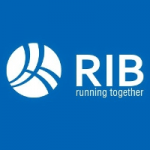
Many construction projects have failed due to delays, reworks, mistakes, lack of team coordination, and limited information integration. However, with the rise of BIM Technology, the global building industry is undergoing a new revolution. Quantity Surveyors are using BIM tools to increase productivity and accuracy of their cost management service. Read on to discover what BIM is and its role in quantity surveying.
What Is BIM?
BIM is known as building information modelling or building information management. It is a highly collaborative process. It enables architects, engineers, quantity surveyors, contractors, manufacturers, real estate developers, and other construction experts to plan, design, and build a building or structure within a single 3D model.
It can also include managing and operating buildings using information available to building or structure owners (Building Information Management). This information enables governments, municipalities, and property managers to make insightful and practical decisions using the model’s data even after the building has been built.

The Role Of BIM Technology In Quantity Surveying
1. Increase Output and Efficiencies
Building Information Modeling (BIM) technology can help increase the productivity of quantity surveyors. They can cut costs and save time, making it simpler for them to collaborate by ensuring that data is transmitted in a dependable manner. With the help of BIM, quantity surveyors can generate more precise estimates, automate the process of conducting quantity surveys, accelerate the procedures involved in costing and use project data appropriately.
2. Ability To Authenticate Model Information
Quantity surveyors require fundamental BIM capabilities, one of which is the ability to authenticate model information. In a Common Data Environment (CDE), Quantity Surveyors can use parametric modelling to automatically update changes in response to shifting project data. This can be done in a timely manner. The use of model manipulation facilitates the extraction of quality and reliable measures and quantities throughout the design process.
3. Improves Estimating Time By Automating The Measuring Process
Quantity surveyors can benefit from BIM’s capabilities, which includes the ability to automate measurement and speed up the traditional procedure for estimating. BIM provides a practical operational solution for cost estimating for quantity surveyors. This is due to the ability to link and update critical quantities and cost information to the building model.
4. Flexibility And Adaptability
The application of BIM will continue to be helpful to the field of quantity surveying in various ways. The quantity surveying profession is evolving into one that is adaptable and takes on a diverse range of responsibilities as users of BIM achieve higher levels of success and productivity.
Conclusion
There is immense value in BIM for quantity surveyors to create efficient processes by incorporating it into their everyday work. With BIM-based cost estimating, quantity surveyor calculations can be more transparent when compared to paper drawings.
At MDA, we work with our clients to create unique business solutions. Through cultural and process alignment, we forge unbreakable partnerships that enable us to deliver long-term cost management and other business strategies, including the introduction of BIM technology.
Contact us today to discuss how our services can help you.






